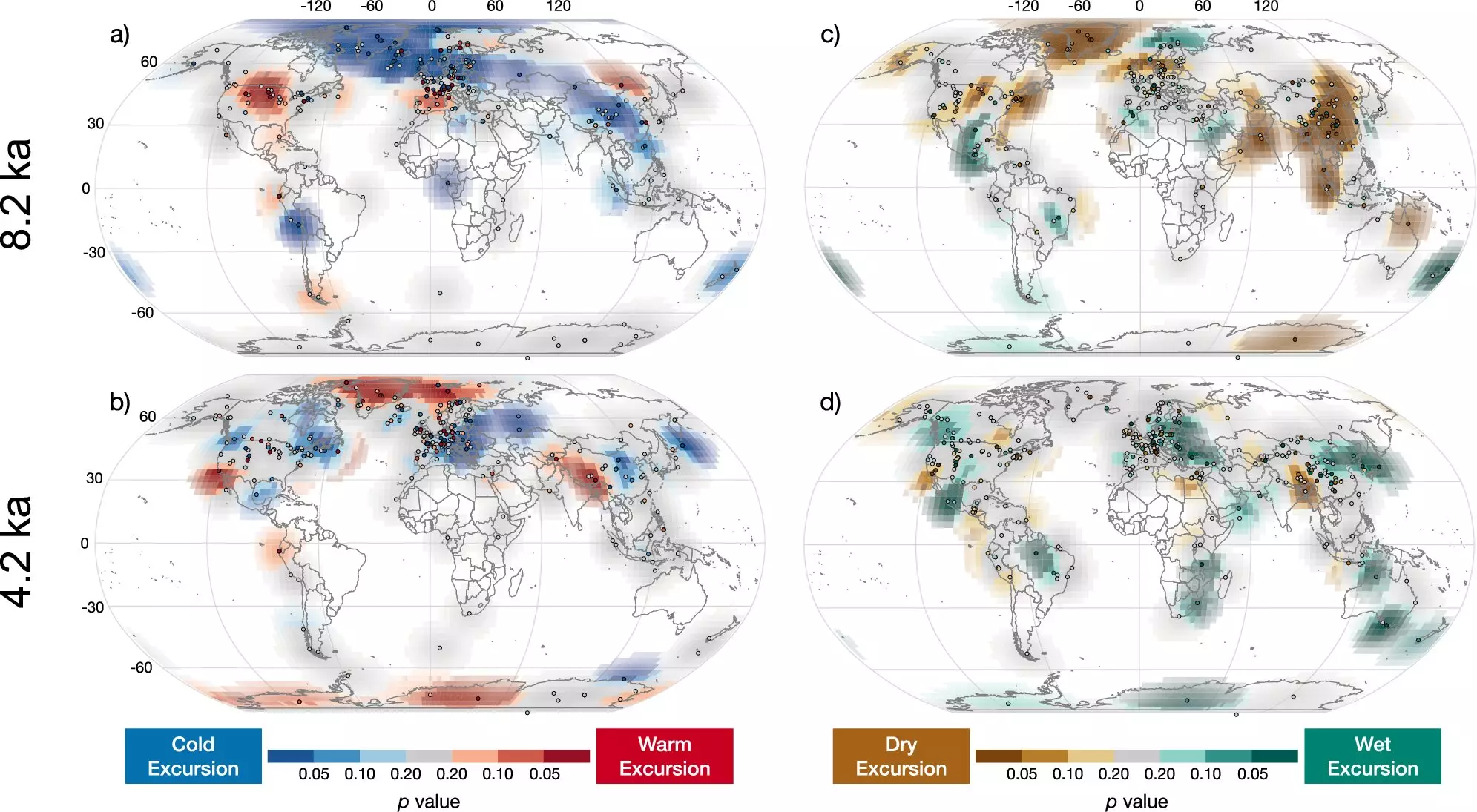In the annals of climate science, the 4.2 ka (4,200 years ago) megadrought has long been perceived as a critical turning point, a phenomenon so catastrophic that it purportedly led to the collapse of early civilizations and significant ecological transformations around the globe. This period has often been labeled an epochal evento, marking what many researchers consider a significant climatic shift within the Holocene epoch, which spans an impressive 11,700 years and continues to shape our understanding of climate patterns today. But what if this established narrative is more nuanced than originally believed? Recent findings from Northern Arizona University challenge the concept of a globally coalescent climatic catastrophe in relation to the 4.2 ka event.
The groundbreaking research, recently published in Nature Communications, underscores the critical need for a reevaluation of past assumptions regarding this ancient climatic event. Led by Nicholas McKay, an associate professor at NAU, the study’s methodology was as innovative as its conclusions. Faced with an overwhelming trove of over 1,000 climate data sets, McKay’s team enlisted graduate students to participate in the research process. The collaborative effort not only contributed to scientific inquiry but also facilitated an enriching educational experience for the students involved. This approach distinguished the study, as it successfully merged rigorous academic inquiry with hands-on learning, culminating in a comprehensive analysis of climate data spanning over 12,000 years.
McKay and his team recognized that the textural richness of the climate record could provide insights not only on localized climatic aberrations but also on the broader implication of these findings for contemporary discussions on climate change. An essential part of their research involved developing enhanced methods to objectively detect and assess climatic events in the paleoclimate data.
As the research team delved into the extensive data available, a significantly different narrative began to emerge. The perceived global impacts of the 4.2 ka megadrought were contradicted by evidence suggesting that while some regions did experience noticeable changes, these impacts were not uniformly catastrophic. Rather than identifying a singular, large-scale disaster, the researchers found numerous smaller-scale climatic variations that had localized effects, leading to a rethinking of how we interpret these ancient events. This suggests that climate fluctuations during the Holocene were not particularly remarkable simply due to the occurrence of the 4.2 ka megadrought but rather a reflection of the era’s inherent climate variability.
Furthermore, the team was able to identify a series of other significant climatic events, such as the known 8.2 ka event and shifts observed during the Common Era that corresponded with periods like the Dark Ages Cold Period and the Medieval Climate Anomaly. The multiplicity of climatic changes observed challenges the previously simplified storyline of abrupt global shifts and suggests that understanding those shifts requires a localized lens rather than a one-size-fits-all interpretation.
The implications of this revised perspective extend beyond mere academic curiosity; understanding how climate has evolved over millennia is crucial for making informed predictions regarding future climatic trajectories. McKay emphasizes that the differentiated nature of ancient climate events can provide valuable lessons for comprehending today’s climate crisis. The research indicates that natural climatic changes have historically occurred on centennial timescales, with local impacts that may not align with global patterns.
However, the contemporary climate crisis, driven largely by anthropogenic factors such as increased carbon dioxide emissions, represents a different category of climatic alteration. While natural changes historically occurred independently, the combination of these natural variations with human-induced changes may lead to unprecedented challenges in the future.
The research conducted at NAU serves as a clarion call for the scientific community to adopt rigorously data-driven approaches when assessing past and future climate variability. It urges caution in interpreting local climatic shifts as regions respond differently to climatic conditions. Additionally, the study’s collaborative structure displays the power of melding educational initiatives with innovative research, paving the way for future climate research that could build off the findings discovered here.
The comprehensive publication of their analytical methods offers invaluable resources for future researchers seeking to grapple with the complexities of climate data, underscoring that understanding past climate dynamics is paramount for contextualizing present and future challenges.
The evolving understanding of the 4.2 ka megadrought illustrates both the complexity of climate science and the utility of collaborative research methodologies. The discourse around climate variability must be recreated to encompass a broader array of events, ensuring that our understanding reflects reality as accurately as possible.


Leave a Reply